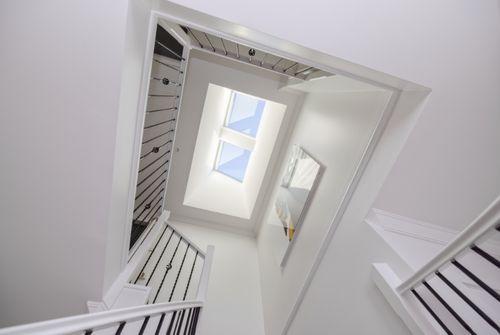Good indoor air quality is essential for maintaining a healthy home environment. Poor ventilation can lead to a buildup of harmful pollutants, excess moisture, and unpleasant odors, which may negatively affect your health and comfort. Fortunately, improving home ventilation is often easier than many think. Here are some practical tips to help you breathe easy in your home.
1. Open Windows Regularly
One of the simplest and most effective ways to improve ventilation is by opening windows. This creates natural airflow, allowing fresh air to circulate throughout your home. Opening windows on opposite sides of your house creates cross-ventilation, promoting a more consistent air exchange. Aim to open windows for at least 10–15 minutes daily to refresh your indoor air, especially in the morning or evening when outdoor temperatures are cooler.
2. Install Exhaust Fans
Exhaust fans are particularly important in areas of your home that generate moisture, such as bathrooms, kitchens, and laundry rooms. These fans help expel moisture, heat, and odors, preventing the growth of mold and mildew. Make sure to use them when cooking, showering, or doing laundry, and ensure they are functioning properly. Consider installing a fan with a timer to ensure it runs long enough to clear out any residual moisture.
3. Use an Air Exchange System
An air exchange or ventilation system is designed to bring in fresh air while expelling stale air. These systems are particularly useful in tightly sealed homes or areas with high humidity. Mechanical ventilation systems such as Energy Recovery Ventilators (ERVs) or Heat Recovery Ventilators (HRVs) can help maintain good airflow while improving energy efficiency. These systems exchange heat between incoming and outgoing air, ensuring your home stays comfortable year-round.
4. Keep Vents and Ducts Clean
Clean air ducts and vents are crucial for ensuring optimal airflow in your home. Over time, dust, dirt, and debris can accumulate in your ventilation system, blocking airflow and reducing air quality. Have your air ducts professionally cleaned every few years, and regularly dust and vacuum vent openings to keep the air circulating smoothly.
5. Use Air Purifiers
If you live in an area with high levels of outdoor pollution or have indoor allergens, air purifiers can help enhance your home’s ventilation by filtering out harmful particles. Consider placing air purifiers with HEPA filters in key areas, such as bedrooms, living rooms, or places with pets or smoking. These devices can remove allergens like dust, pollen, and pet dander, promoting cleaner air indoors.
6. Maintain Your HVAC System
Your heating, ventilation, and air conditioning (HVAC) system plays a major role in home ventilation. Regularly change the air filter to ensure your HVAC system operates efficiently and doesn't circulate dust or pollutants. Also, schedule routine maintenance to check for any issues, such as leaks or blockages in ducts, which can hinder airflow and reduce the overall air quality.
7. Minimize the Use of Chemical Products
Many cleaning products, paints, and air fresheners release volatile organic compounds (VOCs), which can degrade air quality in your home. To reduce indoor pollution, choose natural cleaning solutions or those with low or no VOCs. Open windows or use exhaust fans when using chemical products, and avoid overusing air fresheners, as they can contribute to poor ventilation.
8. Insulate Your Home Properly
Proper insulation plays an important role in home ventilation. When homes are well-insulated, it becomes easier to control the flow of air and maintain comfortable temperatures throughout the year. Insulating your attic, walls, and floors can also prevent drafts that may push conditioned air out of your home, ensuring that your ventilation system doesn’t have to work harder to maintain fresh air circulation.
9. Introduce Houseplants
Houseplants aren’t just decorative; they can also contribute to better indoor air quality. Many plants naturally filter the air by absorbing carbon dioxide and releasing oxygen. Some plants, such as snake plants, peace lilies, and spider plants, have been shown to reduce indoor pollutants like formaldehyde and benzene. Adding a few houseplants can help keep your indoor air fresh and oxygenated.
10. Seal Leaks and Gaps
Air leaks around doors, windows, and walls can negatively affect ventilation by allowing drafts to enter your home. These gaps can also let in dust, allergens, and pollutants from outside. Sealing leaks with weatherstripping or caulk can help keep your home well-ventilated and free of contaminants. Pay attention to areas like the attic, basement, and crawl spaces, which are more prone to air leaks.
Conclusion
Improving ventilation in your home doesn’t have to be a complex or costly task. By using these simple strategies, you can significantly boost your indoor air quality, creating a healthier, more comfortable environment for you and your family. Regular maintenance, along with mindful adjustments to your home’s airflow, can go a long way in ensuring you’re always breathing easy.



